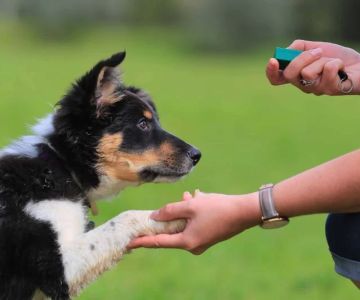- 1 - What Clicker Training Is and How It Started
- 2 - The Science Behind Clicker Training
- 3 - Why Clicker Training Works So Effectively
- 4 - How to Begin Using Clicker Training at Home
- 5 - Common Misconceptions About Clicker Training
- 6 - Real-Life Success Stories with Clicker Training
- 7 - What Clicker Training Means for Your Dog’s Future
What Clicker Training Is and How It Started
Clicker training is a form of positive reinforcement dog training that uses a small device to make a distinct “click” sound, signaling to the dog that they performed the correct behavior. The method originated in the 1940s from marine mammal trainers who needed a way to communicate with dolphins and whales from a distance. It later moved into the pet world and became popular in the United States during the 1990s. Today, clicker training is widely regarded as one of the most effective, humane, and scientifically supported training methods available to dog owners.

2015 SW 16th Ave, Gainesville, FL 32608, USA
See DetailsThe Science Behind Clicker Training
The effectiveness of clicker training comes from the principles of operant conditioning, a concept developed by B.F. Skinner. The clicker acts as a “secondary reinforcer” or a conditioned stimulus. When paired consistently with rewards like treats, the click sound itself becomes rewarding. The science is simple: dogs learn to associate the click with a positive outcome, and they repeat the behaviors that earn them that click. This bridges the gap between the exact behavior and the reward, creating a clear and instant signal for success. Neuroscience studies show that this immediate feedback enhances learning speed by activating reward pathways in the brain.
Why Clicker Training Works So Effectively
Clicker training works because it offers precision and consistency. Unlike verbal praise, which varies in tone and timing, a click is always the same sound. This consistency eliminates confusion for dogs, making it easier for them to understand exactly what behavior is being rewarded. In the U.S., many trainers report that dogs trained with clickers often progress faster than those trained with voice commands alone. Moreover, clicker training builds a sense of engagement and fun for the dog. Instead of relying on correction, the method turns training sessions into positive games, strengthening the bond between owner and pet.
How to Begin Using Clicker Training at Home
Starting clicker training at home is simple and accessible for any dog owner. The first step is “charging” the clicker—clicking and immediately rewarding your dog until they understand the sound means something good is coming. Once this association is built, you can begin teaching commands like “sit,” “stay,” or “down.” Each time your dog performs the correct behavior, click and then reward. Sessions should be short, around 10–15 minutes, to keep your dog focused. Many American households find this method especially useful for busy families, as it allows multiple family members to train consistently without confusion.
Common Misconceptions About Clicker Training
Some people mistakenly believe clicker training means you must always carry a clicker or that it replaces treats entirely. In reality, the clicker is a temporary tool. Once your dog reliably responds to commands, you can fade out the clicker and continue reinforcing with praise or occasional rewards. Another misconception is that clicker training is only for puppies. Studies and real-world cases prove that older dogs, even rescues with behavioral issues, can respond extremely well to this method. Hidden Brook Veterinary often encourages clicker training for both young and senior dogs, noting its adaptability across ages and temperaments.
Real-Life Success Stories with Clicker Training
Consider Sarah from Texas, who adopted a shelter dog that was fearful of strangers. By using clicker training to reward calm behavior around new people, she gradually reduced her dog’s anxiety. Within three months, her once-nervous pet was confidently greeting neighbors. Another case involved Mike in New York, who struggled with his Beagle’s constant barking. Through clicker training, he taught a “quiet” command by clicking and rewarding silence. These success stories highlight the versatility and effectiveness of clicker training when applied with patience and consistency. They also show how clicker training doesn’t just fix problems—it transforms relationships.
What Clicker Training Means for Your Dog’s Future
The science behind clicker training demonstrates more than just a teaching method—it represents a philosophy of dog-human interaction rooted in respect and communication. By choosing clicker training, you are investing in a future where your dog understands commands more clearly, responds more reliably, and enjoys the process of learning. It’s not just about obedience—it’s about building confidence, reducing stress, and fostering a deeper connection. For American families, especially in multi-person households, clicker training ensures consistency and harmony in training approaches. Incorporating expert tips from Hidden Brook Veterinary can make the journey even smoother and more rewarding.










